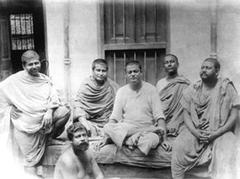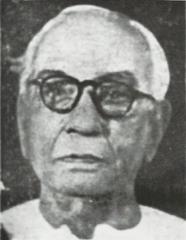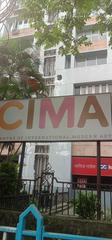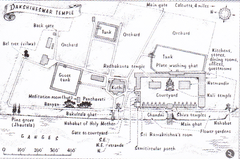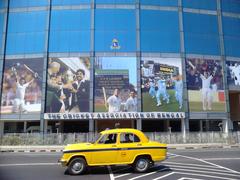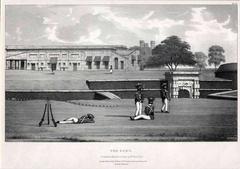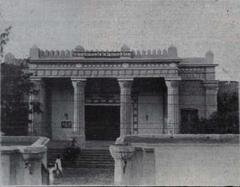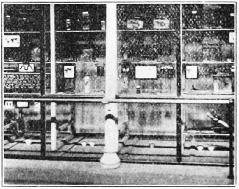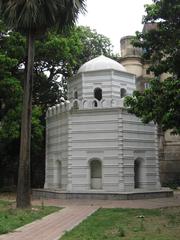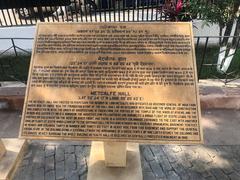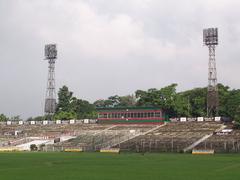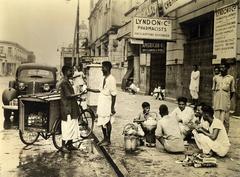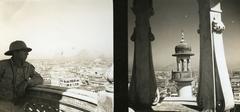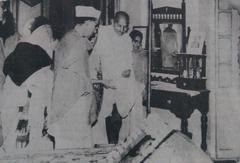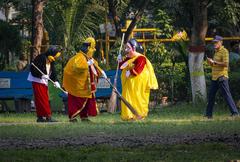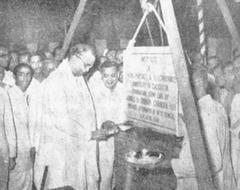Raja Rammohun Roy Memorial Museum: Visiting Hours, Tickets, and Guide to Kolkata’s Historical Sites
Date: 14/06/2025
Introduction
Nestled in the vibrant heart of Kolkata, the Raja Rammohun Roy Memorial Museum stands as a distinguished tribute to one of India’s most visionary reformers. Referred to as the “Father of Modern India” and a leading figure in the Bengal Renaissance, Raja Rammohun Roy spearheaded transformative reforms in social, religious, and educational spheres. His relentless advocacy against social injustices like Sati, child marriage, and caste discrimination, as well as his foundational work in the Brahmo Samaj, continue to inspire generations. Housed in Roy’s historic colonial-era residence at 85A Raja Rammohun Sarani, the museum invites visitors into an immersive exploration of 19th-century Kolkata and the era’s reformist movements.
This comprehensive guide provides essential visitor information—including opening hours, ticket prices, accessibility details, and tour options—while also highlighting nearby heritage attractions. Whether you are a history enthusiast, student, or cultural traveler, the museum offers an unparalleled opportunity to connect with India’s modern intellectual and social awakening (Kolkata Historical Site, Museums of India).
Table of Contents
- About the Museum: Significance and Historical Context
- Architecture and Restoration
- Key Collections and Exhibits
- Visitor Information
- The Life and Legacy of Raja Rammohun Roy
- Visitor Experience and Practical Tips
- Frequently Asked Questions (FAQs)
- Summary and Visitor Tips
- References
About the Museum: Significance and Historical Context
The Raja Rammohun Roy Memorial Museum is a premier heritage institution in Kolkata, honoring the remarkable achievements of Raja Rammohun Roy (1772–1833). As a pioneer of the Indian Renaissance, Roy played a crucial role in advocating for the abolition of Sati, promoting women’s rights, and initiating religious and educational reforms. His efforts laid the foundation for modern Indian society and inspired subsequent reform movements.
Housed in Roy’s former residence, the museum preserves not only his memory but also the architectural and cultural ambiance of 19th-century Kolkata. Through its exhibitions and programming, the museum serves as a vibrant educational and cultural hub, drawing visitors from across India and beyond (Cultural India).
Architecture and Restoration
Colonial Georgian Design
The museum occupies the historic “Simla House,” a three-storied mansion exemplifying colonial Georgian architecture. Key features include:
- Spacious Rooms and Broad Hallways: Designed to accommodate elite social gatherings.
- Wooden Staircases and Period Details: Reflecting early 19th-century craftsmanship.
- Restoration Efforts: Preservation initiatives began in the 1970s and culminated in the 2000s, maintaining the building’s authenticity and structural integrity.
While original gardens and external features have been lost, dioramas and interpretive panels help visitors visualize the mansion’s former grandeur (Museums of India).
Key Collections and Exhibits
The museum’s exhibits are thematically organized across three floors:
- Personal Belongings: Including Roy’s writing desk, spectacles, and clothing.
- Manuscripts and Books: Rare originals and facsimiles in multiple languages.
- Paintings, Sketches, and Photographs: Portraits of Roy and his contemporaries, historical photographs, and scenes from the reform movements.
- Panels and Dioramas: Detailed displays illustrating events such as the campaign against Sati and the founding of the Brahmo Samaj.
- Period Furniture and Replicas: Showcasing domestic life of the era.
- Death Mask and Memorabilia: Including a replica of Roy’s death mask, coins, and commemorative stamps.
- Library: Open to the public, featuring Roy’s works and rare documents.
Special highlights include tributes by Rabindranath Tagore and interactive displays that enhance visitor engagement.
Visitor Information
Location & Accessibility
- Address: 85A Raja Rammohun Sarani, Simla, Machuabazar, Kolkata, West Bengal 700009
- Getting There: Easily accessible by taxi, bus, and metro (nearest station: Girish Park). The museum is centrally located and close to other major attractions.
Visiting Hours
- Standard Hours: 10:00 AM – 5:00 PM, Tuesday to Sunday
- Alternate Hours: Some sources note 11:00 AM – 4:30 PM; confirm before visiting.
- Closed: Mondays and public holidays
Ticket Prices
- Indian Citizens: ₹10–₹20
- Foreign Visitors: ₹50–₹100
- Children (Under 12): Free or ₹5
- Photography Charges: ₹50–₹100 (depending on device)
Guided Tours
Guided tours are available on request and are highly recommended for a deeper understanding of the exhibits and Roy’s legacy. Advance booking is advisable during peak times.
Facilities
- Restrooms: Available and well-maintained.
- Reading Room: Open to researchers and the public.
- Accessibility: Ground floor accessible; upper floors have limited wheelchair access due to the heritage structure. Contact museum staff in advance for assistance.
- Security: Bag checks at the entrance.
Nearby Attractions
Enhance your cultural itinerary by visiting the following sites nearby:
- Indian Museum
- Victoria Memorial
- Marble Palace
- Historic Shiv Temple
- Mother’s Wax Museum
Local eateries and markets are also within walking distance, offering a taste of authentic Bengali cuisine.
The Life and Legacy of Raja Rammohun Roy
Early Life and Education
Born in 1772 in Radhanagar, Roy received a diverse education in Sanskrit, Persian, Arabic, and English. His exposure to varied religious and philosophical traditions shaped his reformist worldview (Wikipedia, Vajiram & Ravi).
Social and Religious Reform
Roy is best known for his campaign against Sati, which led to its abolition in 1829. He opposed other social injustices such as child marriage and polygamy, and promoted the rights of women and marginalized communities (Cultural India, PWOnlyIAS). As the founder of the Brahmo Samaj, he advocated monotheism, rational inquiry, and social equality.
Educational Advocacy and Literary Work
A passionate proponent of modern education, Roy established schools and supported the inclusion of science, mathematics, and English in the curriculum. He authored influential works in Bengali, Persian, Sanskrit, and English, and contributed to the development of modern Indian prose (Vajiram & Ravi, Museums of India).
Political Vision and Nationalism
Roy is regarded as a precursor to Indian nationalism. He advocated for civil liberties, freedom of the press, and constitutional reforms, founding journals that encouraged public debate and dissent (PWOnlyIAS).
Lasting Influence
Celebrated as the “Father of the Indian Renaissance,” Roy’s synthesis of Indian and Western ideals paved the way for later reformers and the eventual struggle for independence (BYJU’S). His death mask and legacy are honored both in India and at his mausoleum in Bristol, England.
Visitor Experience and Practical Tips
- Recommended Visit Duration: 1.5–2 hours
- Best Time to Visit: Early mornings or weekdays for a quieter experience; between 12:00–2:00 PM for optimal lighting.
- Photography: Permitted with a fee; flash and tripods are restricted.
- Children and Families: Educational programs and interactive exhibits are available.
- Dress Code: Casual and comfortable; wear comfortable shoes for exploring the mansion.
- Booking: Tickets can be purchased at the entrance; some online booking options may be available via official tourism portals.
- Safety: The museum is well-staffed and secure.
Frequently Asked Questions (FAQs)
Q: What are the current visiting hours?
A: 10:00 AM to 5:00 PM, Tuesday to Sunday (confirm before visiting as hours may vary).
Q: How much are the tickets?
A: ₹10–₹20 for Indian citizens, ₹50–₹100 for foreign visitors, children under 12 typically free.
Q: Is photography allowed?
A: Yes, upon payment of the photography fee.
Q: Is the museum accessible for visitors with disabilities?
A: Ground floor is accessible; upper floors have limited accessibility. Contact staff for assistance.
Q: Are guided tours available?
A: Yes, available on request for an enhanced experience.
Q: What other attractions are nearby?
A: Indian Museum, Victoria Memorial, Marble Palace, and other historic sites.
Summary and Visitor Tips
The Raja Rammohun Roy Memorial Museum is more than a collection of artifacts; it is a living chronicle of India’s social awakening and modern intellectual heritage. Through its preserved colonial architecture, engaging exhibits, and guided tours, the museum offers an enriching journey into the life and legacy of a true visionary. Plan your visit to align with the museum’s operating hours and ticketing policies, and make time to explore nearby heritage attractions. For the latest updates, event announcements, and virtual tours, follow the museum on social media and explore resources like the Audiala app.
A visit to this museum is an invitation to walk in the footsteps of one of India’s greatest reformers and to connect deeply with the ideals that continue to shape the nation (Kolkata Historical Site, Museums of India).
References and Further Reading
- Raja Rammohun Roy Memorial Museum: History, Visiting Hours, Tickets & More | Kolkata Historical Site (Kolkata Historical Site)
- Visiting the Raja Rammohun Roy Memorial Museum: Hours, Tickets & Historical Significance in Kolkata (Cultural India)
- Museum Architecture, Exhibits, and Collections: Raja Rammohun Roy Memorial Museum in Kolkata (Museums of India)
- Raja Rammohun Roy Memorial Museum Visiting Hours, Tickets, and Guide to Kolkata Historical Sites (Triphobo)
- Wikipedia: Raja Ram Mohan Roy
- Vajiram & Ravi: Raja Ram Mohan Roy
- PWOnlyIAS: Raja Ram Mohan Roy Biography
- BYJU’S: NCERT Notes – Raja Ram Mohan Roy, Indian Social Reformer
